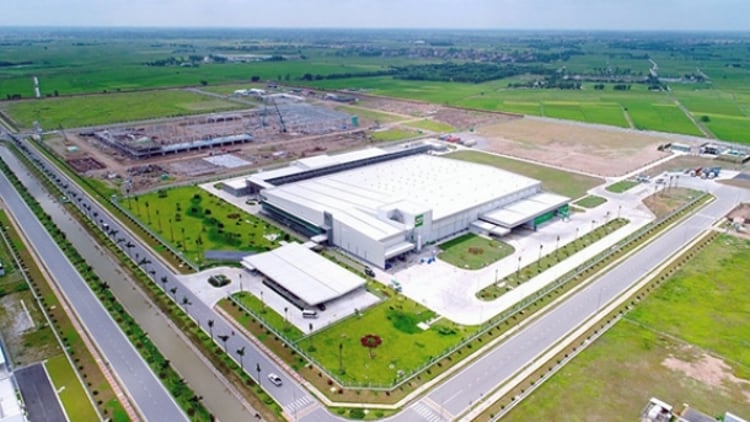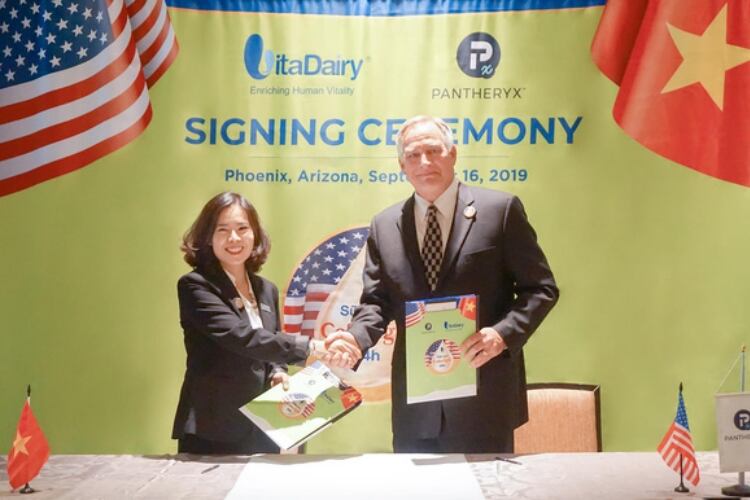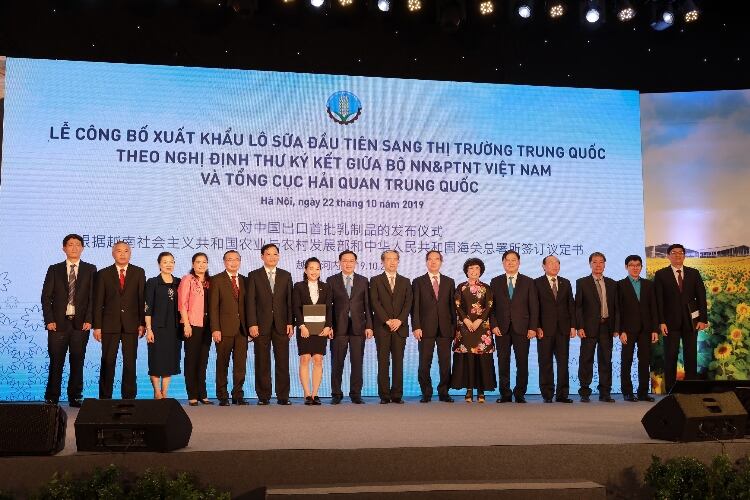Last month, the industry set a target of producing 1bn liters of fresh milk this year, equivalent to 38% of domestic demand.
This figure is set to increase in the next five years to 1.4bn liters, based on a development plan subscribed to by the domestic dairy industry.
The Vietnam Dairy Association forecasts supply will grow by 9-10% in 2020, with local per capita milk consumption rising to 28 liters.
According to the industry body, the revenue from the dairy sector reached US$4.7bn in 2018, an increase of 9% over 2017. From 2010-2018, it saw an average growth rate of 12.7% per year.
Chairman of the association, Tran Quang Trung, said the growth is due to rising incomes and the development of modern sales chains.
Demand for high-value dairy products is also expected to increase sharply, due to Vietnam’s largely young population and a growing number of middle-class urbanites. Customers in these demographics often want to experience new dairy products, especially organic and healthy ones.
Liquid milk and powdered milk together make up nearly three-quarters of the market’s value. In recent years, dairy companies have started diversifying into organic and special nutritional products. At the same time, however, the consumption of other value-added products like cheese and butter remains modest in Vietnam.
Last year, per capita milk consumption stood at 26 liters per year, far lower than the 35 liters consumed by Thais, 45 by Singaporeans and between 80-100 liters in Europe. Currently, the domestic dairy industry only supplies just over a third of demand.
Yet it has been witnessing a decent lick of growth in recent years. Dairy companies have been seen renovating their facilities and production equipment as part of wide-ranging expansion projects. Some have brought a new generation of connected technology to their production in a bid to improve the quality and quantity of their products.
Vietnamese growth
According to the Department of Livestock Production, under the Ministry of Agriculture and Rural Development, Vietnam’s cow herd has been growing strongly as large companies increase their investment in expanding production and turn to animal husbandry.
Some dairy majors have been building bases for locally produced raw materials for their herds in a move to vertically integrate their operations. These have also accelerated the development of dairy farms through imports of more cows from the US and Australia.
Some farms have reached GlobalGAP and organic standards, and also built links between their farms and processing plants.
Vinamilk
Vinamilk, Vietnam’s undisputed leader in dairy, currently has 12 farms across the country, including two that conform to European organic standards and 10 that follow GlobalGAP standards.
The company, which accounts for half of the overall milk market, has invested heavily in increasing its production this year, and now has a total of 120,000 dairy cows churning out more than 950 tonnes of raw fresh milk a day.
It is expecting to increase this number to 200,000 this year, and double productivity, in part thanks to the opening of Vietnam’s biggest dairy farm in March, at a cost of US$51.7m, in the southern province of Tay Ninh.
It is also building a complex producing organic milk in neighboring Laos, with construction expected to be complete by the end of this year. With its organic fresh milk meeting European and American standards, production from this complex will supply the Vietnamese market as well as being shipped off to export markets.
TH Group
Meanwhile, TH Group, parent of TH True Milk, has also been showing its largesse by spending some US$2.7bn on developing its fresh milk production and dairy processing facilities.
TH True Milk recently became the first Vietnamese company to export fresh milk to China after its products were found to meet the strict requirements set by the destination market.
Though China has opened its market to imported milk since 2013, Vietnamese dairy producers failed to gain access until last October, when TH Group was granted a code to export by the China General Department of Customs.
Vinamilk has since been given approval to access China’s US$60bn milk market, though it, TH and other Vietnamese dairy companies should expect to face tough competition from strong domestic players, including China Modern Dairy, China Mengniu and Yili. China also has a large number of non-tariff barriers that makes it hard for foreign companies to crack its market.
TH has over the last decade focused on sustainable development, accelerating high-tech agricultural production and adopting a digital approach to animal husbandry to ramp up the scale of its dairy herd. To date, the company has some 45,000 dairy cows.
And not to be left out, Nestlé Vietnam opened the second phase of its Bong Sen plant extension in the northern province of Hung Yen late last year—its sixth factory in Vietnam.
The expanded plant will double the multinational’s production capacity for nutrition products in Vietnam, at an accumulated cost of US$100m.




